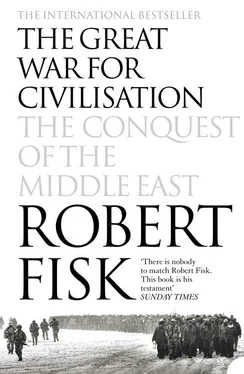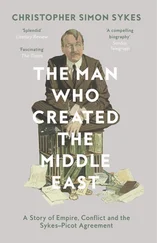An embassy assessment of Iranian society in 1978 reads like an account of Iraqi society before the fall of Saddam in 2003 – would that the Americans had read it before their invasion of Iraq – and ends with conclusions that Khomeini could only agree with:
There is much in Iranian history to predispose both the ruler and the ruled to exercise and to expect authoritarian behaviour. There exists no tradition of the orderly transfer of authority, there has been no real experience with democratic forms … There is in Iran … an established tradition of a strong ruler at the head of an authoritarian government, and of general obeisance to any authority that manifests its will with force. The experience of the current Shah, for example, superficially suggests that political stability in Iran is best assured by authoritarian government, and that periods of the greatest political unrest arise when the ruler … shares authority, as during the Mossadeq crisis of 1951–53, or attempts to introduce additional freedoms, as with the liberalization programme of the mid-1970s … The inability of Iranian society to accommodate successfully to these social changes stems in large part from the long-standing and pervasive influence of religion and religious leaders … Shia Islam is not merely a religion; rather it is an all encompassing religious, economic, legal, social, and intellectual system that controls all aspects of life, and the sect’s leaders, unlike their counterparts in Sunni Islam, are believed to be completing God’s revelations on earth.
Although this essay reached profoundly inaccurate conclusions – ‘we do not foresee any likely circumstances in which a government controlled by religious leaders would come to power,’ its authors wrote – other contemporary documents could display remarkable shrewdness. John Washburn would write on 18 September 1978 that ‘the Shah’s repression of religion in Iran has made Shiism’s predominant groups dogmatic and conservative in the course of defending themselves, just as Roman Catholicism has become in Communist countries.’ As long ago as 1972, the then ambassador, Richard Helms, formerly head of the CIA, received a long ‘secret’ memo on the Iranian ‘character’ which suggested that Iran’s repeated national humiliations had ‘engrained in the Iranian personality very marked negative characteristics’ but ‘under foreign occupation (Arabs, Mongols, Turks) or manipulation (British, Russians), Iranians preserved their sense of nationhood through their culture … and their self-respect in cloistered and concealed private lives … The world outside was justifiably seen as hostile.’
But it was the more prosaic efforts of US diplomats that probably got closer to the truth. A note from US consulates in Iran on 21 November 1978 reported public opinion outside Tehran. ‘Why, it is being asked, does Iran need F-14s when villagers less than five kilometres from Shiraz’s Tadayon Air Force Base … still live without running water or electricity?’ *
What none of the US embassy archives predicted was the brutality of the Iranian revolution, the extraordinary cruelty that manifested itself among the so-called judges and jurists who were predisposed to torture and kill out of whim rather than reflection. At the end of the eight-year Iran – Iraq war, this would meet its apogee in the mass hangings of thousands of opposition prisoners. But its characteristics were clearly evident within days of the Shah’s overthrow; and no one emphasised them more chillingly than the Chief Justice of the Islamic Courts, Hojatolislam Sadeq Khalkhali, the ‘Cat’, who had told me in December 1979 how he intended to ‘string up’ the Shah. When he said that, and despite his ferocious reputation, I thought at first it was a joke, a cliché, an idle remark. Of course, it was nothing of the sort.
The Revolutionary Guards sitting around Khalkhali when I first visited the Hojatolislam had all been wounded while fighting Kurdish rebels in the north-west of Iran. It was hot in the little room in Qom and the bespectacled divine was wearing only pyjamas and a white apron. ‘You are from The Times of London?’ he asked, glancing in my direction. ‘Well, look at these men.’ He paused and then began to giggle in a high-pitched voice. ‘The rebels did this. I will pull them out by the roots – I will kill all of them.’ In truth, Khalkhali did not look the part. He was a small man with a kindly smile – Islamic judges at that time all seemed to smile a lot – which he betrayed when making inappropriate jokes. Asked by a reporter two weeks earlier how he felt when the number of executions in Iran was decreasing, he replied with a chuckle: ‘I feel hungry.’ It would have been a serious mistake, however, to imagine that Iran’s most feared judge – the ‘wrath of God’ to his admirers – did not take his vocation seriously. ‘If an Islamic judge realises that someone is guilty of corruption on earth or of waging war against God,’ he said, ‘the judge will condemn the accused, even if he claims he is innocent. The most important thing in Islamic justice is the wisdom of the judge … Even if a man denies the charges against him, it means nothing if the judge decides otherwise.’ Hojatolislam Khalkhali naturally had no time for reporters who asked why so many Iranians were executed after the revolution. ‘The people who were executed were the principal retainers of the previous hated regime. They had exploited this nation. They had been responsible for killings, tortures and unlawful imprisonment. I am surprised that you ask such questions.’ Khalkhali displayed equally little patience when asked if his much-publicised determination to engineer the assassination of the ex-Shah accorded with the principles of Islamic justice. ‘We know that America will not return the Shah,’ he said – with, it had to be admitted, a remarkable sense of realism – ‘so we have to kill him – there is no other choice. If it was possible to bring him here and try him, we would kill him afterwards. But since we cannot try him – and since we are sure that he should be executed – we will kill him anyway. No one tried Mussolini. And who tried the Frenchmen who were executed for collaborating with Hitler’s soldiers in the Second World War?’
All the while he was talking, the Revolutionary Guards would massage their wounded limbs – or what was left of them – and exercise their artificial hands. The creaking and clacking of steel fingers punctuated the conversation as Khalkhali walked around the room, shoeless and sockless, or massaged his feet with his hands. How, I asked, did he personally feel when he sentenced a man to death? ‘I feel that I am doing my duty and what I am required to do by the Iranian people. That is why I have never been criticised by my people for these executions.’ But had he not refused to give Hoveyda or Nassiri, the ex-Savak boss, any right to appeal against his death sentence?
‘They did appeal,’ he replied. ‘And they asked the Imam and the court to forgive them. Many people came to me and asked me to forgive these people. But I was responsible to the Iranian nation and to God. I could not forgive Hoveyda and Nassiri. They destroyed the lives of 60,000 people.’ Khalkhali had, he claimed, ordered a commando squad to go to Panama where the Shah was now staying with his family in order to kill all of them. ‘I do not know if they have left Iran yet,’ he said, and then broke into that familiar chuckle as he ventured into Spanish. ‘They all have pistolas .’ Since the murder of the Shah’s nephew in Paris almost two weeks earlier, Interpol – and Khalkhali’s intended victims – were now paying a good deal of attention to the judge’s threats. And Khalkhali obligingly listed the targets of his hit squads. ‘We are looking for Sharif Emami [former prime minister], General Palizban, Hushang Ansari [former finance minister], Ardeshir Zahedi [former ambassador in Washington], Gholamali Oveisi [former martial law administrator], Gharabagi [former chief of staff in the Shah’s army], Farah [the ex-empress], Hojab Yazdani [a former banker], Valían [former minister of agriculture], Jamshid Amouzegar [former prime minister] and Shapour Bakhtiar [the Shah’s last prime minister, now living in Paris]. We also want the Shah and his brother and Ashraf [the Shah’s twin sister]. Wherever we can find these people, we will kill them.’
Читать дальше












